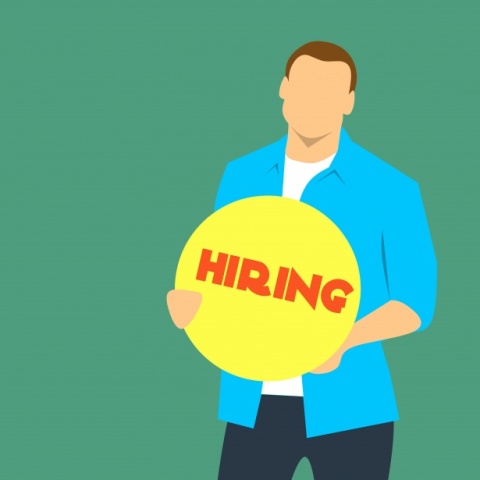Jobs report to show whether hiring is slowing as Fed wants
When the government issues the November jobs report on Friday, it could provide clarity on whether hiring and pay growth are gradually cooling a trend that the Federal Reserve sees as vital in its fight against high inflation.In a closely watched speech Wednesday, Fed Chair Jerome Powell pointed to a robust job market as a key driver of higher prices, particularly in services industries, ranging from restaurants and health services to entertainment and pet care.Powell said the Fed would like to see slower job growth and more modest wage gains in the coming months.

- Country:
- United States
When the government issues the November jobs report on Friday, it could provide clarity on whether hiring and pay growth are gradually cooling — a trend that the Federal Reserve sees as vital in its fight against high inflation.
In a closely watched speech Wednesday, Fed Chair Jerome Powell pointed to a robust job market as a key driver of higher prices, particularly in services industries, ranging from restaurants and health services to entertainment and pet care.
Powell said the Fed would like to see slower job growth and more modest wage gains in the coming months. The cost of such goods as used cars, furniture and appliances, Powell noted, are easing, and housing costs will likely slow next year. That leaves price acceleration in much of the economy's vast service sector as the most likely source of persistent inflation pressures. Those price spikes, the Fed chair said, largely reflect rising pay.
“We want wages to go up strongly, but they've got to go up at a level that is consistent with 2% inflation over time,” he said.
Yet for now, paychecks are growing at about a 5% annual pace, among the fastest in decades, and about 1.5 percentage points higher than what the Fed would prefer. Wages still trail inflation, which was 7.7% in October, near a four-decade high.
Job growth has slowed this year, from a monthly average of 540,000 from January through March, to 289,000 in the three months that ended in October. But that pace is still strong — much more than the Fed would like. Powell noted in his speech Wednesday that the economy requires only about 100,000 added jobs a month to keep pace with population growth.
Any hiring above that level means that demand for workers is outpacing supply and that the job market is still running hot, said David Wilcox, a former Fed economist who is now at Bloomberg Economics and the Peterson Institute for International Economics.
Economists surveyed by data provider FactSet have predicted that employers added 200,000 jobs last month. That would amount to the lowest total since December 2020 yet would still represent a solid gain. The unemployment rate is expected to stay at 3.7%, near a half-century low.
The US economy continues to show signs of surprising resilience 18 months after inflation first rocketed toward its highest levels in 40 years as the economy roared out of the pandemic recession. In response, the Fed has raised interest rates relentlessly higher.
Last quarter, the economy expanded at a brisk 2.9% annual rate after having shrunk in the first six months of the year. Consumer spending picked up, and a spike in exports helped boost growth.
Americans kept increasing their spending in October — even after accounting for inflation — the government reported Thursday. Consumers stepped up their purchases of cars, restaurant meals and other services.
Although steady hiring and rising wages are fuelling more spending, Americans are also turning increasingly to credit cards to keep up with higher prices. Many are also digging into savings, a trend that cannot continue indefinitely.
Other signs of weakness have sparked concerns about a likely recession next year, in part because many fear that the Fed's surging rate hikes will end up derailing the economy. Particularly in the technology, media and retail industries, a rising number of companies have made high-profile layoff announcements.
In addition to job cuts from tech behemoths like Amazon, Meta and Twitter, smaller companies — including DoorDash, the real estate firm Redfin and the retailers Best Buy and the Gap — have said they will lay off workers.
And in November, a measure of factory activity dropped to a level that suggested that the manufacturing sector is contracting for the first time since May 2020.
(This story has not been edited by Devdiscourse staff and is auto-generated from a syndicated feed.)
ALSO READ
Potash mine in Amazon to go ahead with state license, says CEO
Deforestation in Brazil's Amazon down 40% in Q1, minister says
Potash mine in Amazon gets state license questioned by federal authorities
Deforestation in Brazil's Amazon down 40% in Q1, minister says
Deforestation in Brazil's Amazon down 40% in Q1, minister says










